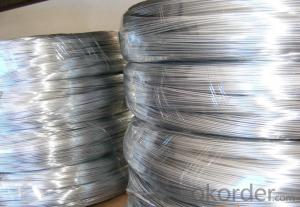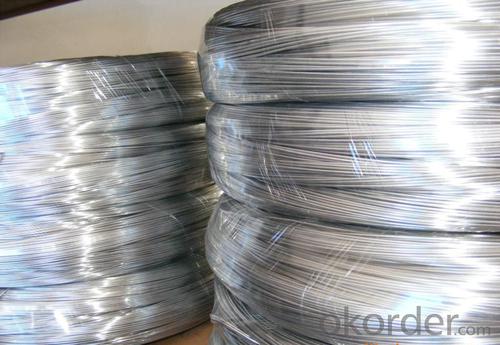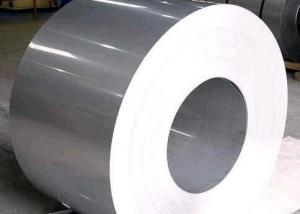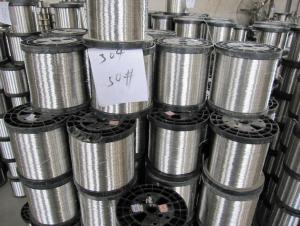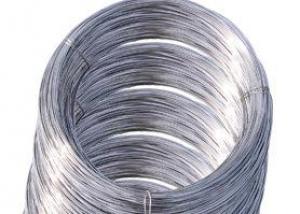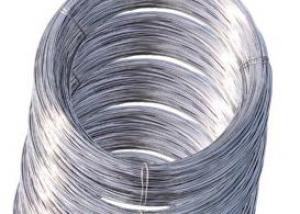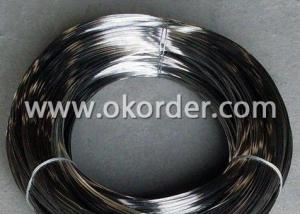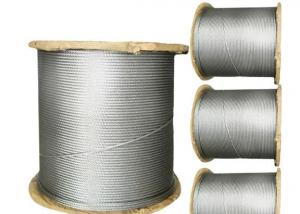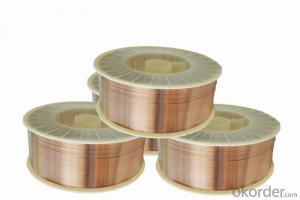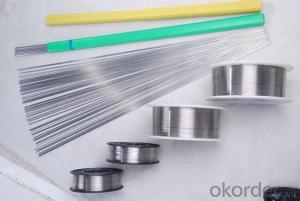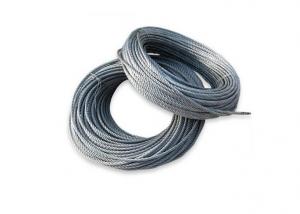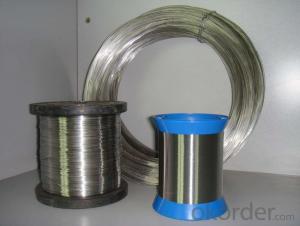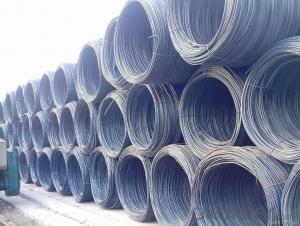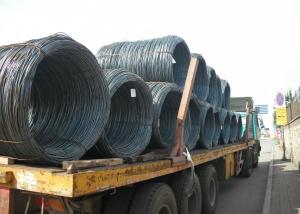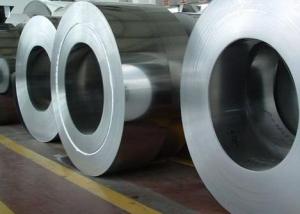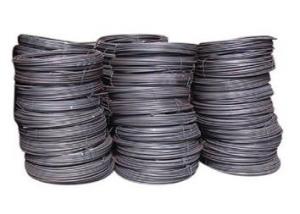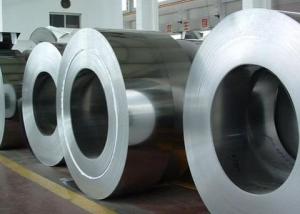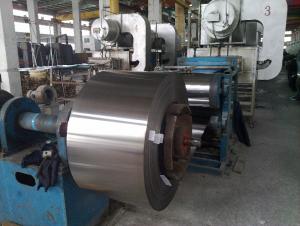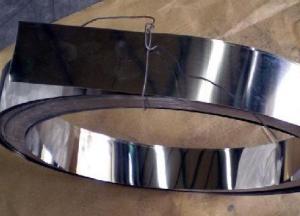stainless steel wire
- Loading Port:
- China Main Port
- Payment Terms:
- TT OR LC
- Min Order Qty:
- -
- Supply Capability:
- -
OKorder Service Pledge
OKorder Financial Service
You Might Also Like
Specifications
high tensile strength stainless steel spring wire
1.Factory price
2.Customized size
3.fast delivery
4.Certificate:ISO
stainless steel wire
As a professional manufacturer, we can provide different size of Wire with good quality and reasonable price.
Specifications:
1) Grade: 201,202,301,303,304,304L,305,316,316L,321,410,416,420,430...
1.4301, 1.4306, 1.4845, 1.4401, 1.4371, 1.4597,1.4541, etc
2) Standard: ASTM, EN,DIN,JIS
3) Diameter: 0.05-20mm
4) Surface: bright, cloudy,plain,black
5) Type: spring,welded,tig,mig etc
soft and hard
6) Packing: in coil or in spool then in carton or as your request
Terms:
1) Loading Port: Shanghai or Hongkong
2) Delivery term: FOB,CFR, CIF
3) Delivery lead time: 10 working days after received deposit.
4) Payment term:30% by T/T as deposit., balance will be paid by T/T ,
5) Quality assurance: Mill Test Certificate is supplied with shipment, third Party Inspection is acceptable
Product Application:
With bright surface, slight magnetism and no cracks on forming, is widely used in bicycle fittings, kitchen and sanitation tools, goods shelf, pet cages, gill racks, decorative handles and baskets, food and medical machinery accesses, etc.
Our advantage:
Our range of Wire made of Stainless Steel are not only known for their variety but are also known for their good quality, long life and very reasonable prices. Quality and service is our first priority, we effectively use technically advanced machinery equipment and the expertise of our work to deliver our stainless steel wired products
| Type AISI | C Max % | Mn Max % | P Max% | S Max% | Si Max% | Cr% | Ni% | Mo% |
| 201 | 0.15 | 5.50-7.50 | 0.06 | 0.03 | 1 | 16.000-18.00 | 0.5 | - |
| 202 | 0.15 | 7.50-10.00 | 0.06 | 0.03 | 1 | 17.00-19.00 | 3.-0-5.00 | - |
| 204CU | 0.08 | 6.5-8.5 | 0.06 | 0.03 | 2 | 16.0-17.0 | 1.5-3.0 | - |
| 302 | 0.15 | 2 | 0.045 | 0.03 | 1 | 17.00-19.00 | 8.00-10.00 | - |
| 302HQ/ | 0.03 | 2 | 0.045 | 0.02 | 1 | 17.00-19.00 | 9.00-10.00 | - |
| 304CU | ||||||||
| 304HC | 0.04 | 0.80-1.70 | 0.04 | 0.015 | 0.3-0.6 | 18-19 | 8.5-9.5 | - |
| 303 | 0.07 | 2 | 0.045 | 0.25 Min | 1 | 17-19 | 8.0-10.0 | 0.6 |
| 304 | 0.08 | 2 | 0.045 | 0.03 | 1 | 18.00-20.00 | 8.0-10.50 | - |
| 304L | 0.03 | 2 | 0.045 | 0.03 | 1 | 18.00-20.00 | 8.00-12.00 | - |
| 310 S | 0.055 | 1.5 | 0.04 | 0.005 | 0.7 | 25.0-28.0 | 19-22 | - |
| 314 | 0.25 | 2 | 0.045 | 0.03 | 1.50-3.00 | 23.00-26.00 | 19.00-22.00 | - |
| 316 | 0.06 | 2 | 0.045 | 0.03 | 1 | 16.00-18.00 | 10.00-14.00 | 2.00-3.00 |
| 316L | 0.03 | 2 | 0.045 | 0.03 | 1 | 16.00-18.00 | 10.00-14.00 | 2.00-3.00 |
| 316Ti | 0.08 | 2 | 0.045 | 0.03 | 0.75 | 16.00-18.00 | 10.00-14.00 | 2.00-3.00 |
| 347 | 0.08 | 2 | 0.045 | 0.03 | 1 | 17.00-19.00 | 9.00-13.00 | - |
| 321 | 0.06 | 2 | 0.045 | 0.01 | .40-.60 | 17-19.00 | 9.4-9.6 | - |
| ER308 | 0.08 | 2 | 0.045 | 0.03 | 1 | 17-19 | 9.5-13.0 | - |
| ER308L | 0.025 | 1.50/2.00 | 0.025 | 0.02 | 0.5 | 19.0/21.0 | 9.5/11.0 | - |
| ER309 | 0.08 | 1.50/2.50 | 0.02 | 0.015 | 0.5 | 23.0/25.0 | 20.0/14.0 | - |
| ER309L | 0.025 | 1.50/2.50 | 0.02 | 0.015 | 0.5 | 23.0/25.0 | 12.0/14.0 | - |
| ER316L | 0.02 | 1.50/2.00 | 0.02 | 0.02 | 0.5 | 18.0/20.0 | 12.00-14.00 | 2.00-3.00 |
| 430L | 0.03 | 1 | 0.04 | 0.03 | 1 | 16.00-18.00 | - | |
| 434 | 0.08 | 1 | 0.04 | 0.03 | 1 | 16.00-18.00 | - | 0.90-1.40 |
- Q: What is the minimum diameter of stainless steel wire? Do you have a price smaller than 10 microns? Where can I sell it?
- I'm sorry, at present, industrial grade stainless steel wire can only reach 0.05mm, that is, 50 microns.
- Q: What are the different types of stainless steel wire mesh filters?
- There are several different types of stainless steel wire mesh filters available, each with its own unique characteristics and applications. Some of the common types include: 1. Plain Weave: This is the most basic and commonly used type of stainless steel wire mesh filter. It consists of wires woven over and under each other in a simple crisscross pattern, creating square openings. Plain weave filters are suitable for general filtration applications and offer good strength and durability. 2. Twill Weave: Twill weave filters have a diagonal pattern formed by wires passing over two and under two, creating a tighter weave compared to plain weave. This type of filter provides increased filtration efficiency and is often used in applications where finer particles need to be captured. 3. Dutch Weave: Dutch weave filters have a complex weave pattern that consists of coarse wires running in one direction and finer wires running in the other, creating a dense filtration surface. This type of filter is particularly effective in capturing fine particles while maintaining good flow rates. It is commonly used in applications that require high precision filtration, such as oil and gas, pharmaceutical, and food processing industries. 4. Welded Wire Mesh: Unlike woven filters, welded wire mesh filters are made by welding individual wires together at the intersections. This type of filter offers excellent strength and rigidity, making it suitable for demanding applications that require heavy-duty filtration, such as mining and construction industries. 5. Expanded Metal Mesh: Expanded metal mesh filters are made by cutting and stretching a sheet of metal, creating a pattern of diamond-shaped openings. This type of filter provides high open area and good airflow, making it suitable for applications where ventilation and drainage are important, such as air filters and drainage systems. It is important to select the appropriate type of stainless steel wire mesh filter based on the specific requirements of the filtration application, including the desired filtration efficiency, flow rate, and durability. Consulting with a filtration expert or supplier can help in selecting the right type of filter for a particular application.
- Q: What are the applications of stainless steel wire?
- Due to its unique properties and characteristics, stainless steel wire finds a wide range of applications. Here are some of its main uses: 1. In various industrial sectors such as construction, automotive, aerospace, and marine industries, stainless steel wire is extensively utilized. It is employed in the production of high-strength components, structural parts, springs, fasteners, and wire ropes. 2. In the medical field, stainless steel wire is widely employed for manufacturing surgical instruments, orthopedic implants, and medical device components. Its corrosion resistance, biocompatibility, and strength make it an ideal material for these purposes. 3. Filtration and sieving processes often utilize stainless steel wire mesh. Industries such as food processing, pharmaceuticals, mining, and water treatment make use of stainless steel wire mesh for creating filters, sieves, screens, and strainers. 4. In the jewelry industry, stainless steel wire is increasingly being used due to its durability, resistance to tarnish, and affordability. It is employed in the production of various jewelry items like rings, bracelets, necklaces, and earrings. 5. Electrical and electronic applications also make use of stainless steel wire. It is employed for wiring, connectors, heating elements, and resistors. Its high electrical conductivity and resistance to corrosion make it suitable for these purposes. 6. Artists and craftsmen utilize stainless steel wire for creating sculptures, wire art, and decorative items. Its strength, malleability, and ability to retain shape make it an excellent medium for artistic expression. 7. The automotive and transportation industry utilizes stainless steel wire for springs, cables, brake wires, and exhaust systems. Its high strength and resistance to corrosion and heat make it suitable for these applications. 8. In the agricultural and horticultural sectors, stainless steel wire is commonly used for vineyard trellising, plant support structures, and fencing. Its durability and resistance to rust and weather conditions make it ideal for these uses. Overall, stainless steel wire's versatility, strength, corrosion resistance, and aesthetic appeal make it a valuable material in a wide range of applications across various industries.
- Q: 304 stainless steel wire drawing why rust?? long rust what is the reason?
- 1. stainless steel products have to be passivation process, the surface free iron removal, rust prevention will be good. 304, only to clean the workpiece, soaked in 45% (volume ratio) nitric acid about 30-60min., that is passivation effect2. wire drawing can not contain alumina and other metal compounds, to avoid contamination of stainless steel surface, will affect corrosion resistance and passivation effect3., stainless steel cutting tools, wheels, grinding materials can not share with other metal work
- Q: Can stainless steel wire be used for making wire jewelry?
- Yes, stainless steel wire can definitely be used for making wire jewelry. Stainless steel wire is a popular choice among jewelry makers for several reasons. Firstly, stainless steel is highly durable and resistant to tarnish, rust, and corrosion, making it ideal for creating long-lasting jewelry pieces. It also has a beautiful silver-like appearance that adds a sleek and modern touch to any design. Stainless steel wire is available in various thicknesses or gauges, allowing for versatility and the creation of different types of jewelry, such as necklaces, bracelets, earrings, and rings. Wire jewelry made from stainless steel is known for its strength and flexibility, making it suitable for intricate wire wrapping and intricate designs. Furthermore, stainless steel wire is hypoallergenic, making it an excellent choice for individuals with sensitive skin or allergies to certain metals. It is also easy to clean and maintain, requiring minimal effort to keep it looking shiny and polished. Overall, stainless steel wire provides jewelry makers with a durable, versatile, and visually appealing material to create stunning wire jewelry that will withstand the test of time.
- Q: Can stainless steel wire be used for HVAC ductwork?
- Absolutely, HVAC ductwork can indeed utilize stainless steel wire. Stainless steel is renowned for its exceptional qualities such as durability, resistance to corrosion, and remarkable strength, making it an ideal selection for ductwork in HVAC systems. The utilization of stainless steel wire frequently serves to reinforce and offer structural support to the ductwork, guaranteeing that it retains its shape and integrity even when subjected to elevated pressure or temperature conditions. Moreover, stainless steel happens to be non-reactive and does not emit any hazardous substances, ensuring its safety for implementation in HVAC systems. Consequently, employing stainless steel wire for HVAC ductwork provides a dependable and enduring solution.
- Q: What are the different packaging options available for stainless steel wire?
- There are several different packaging options available for stainless steel wire, depending on the specific requirements and preferences of the buyer. 1. Spools: Stainless steel wire can be packaged in spools, which are cylindrical reels made of plastic or metal. Spools are commonly used for smaller quantities of wire, typically in the range of a few hundred feet or meters. They are compact and easy to handle, making them suitable for various applications such as crafting, jewelry making, and small-scale industrial use. 2. Coils: Coils are another popular packaging option for stainless steel wire. In this case, the wire is wound into a circular shape, forming a coil. Coils are typically larger than spools and can hold larger quantities of wire, ranging from a few hundred to several thousand feet or meters. Coils are commonly used in industrial applications, construction, and electrical wiring. 3. Reels: Larger quantities of stainless steel wire, typically used in industrial settings, can be packaged on reels. Reels are similar to spools but are designed to accommodate much larger lengths of wire, often thousands of feet or meters. These reels are made of sturdy materials such as wood or metal and are used for heavy-duty applications like fencing, marine rigging, and automotive manufacturing. 4. Bundles: For extremely long lengths of stainless steel wire, bundles are a suitable packaging option. Bundles consist of multiple coils or spools of wire bound together with straps or bands. This type of packaging is commonly used for wholesale or bulk purchases, where large quantities of wire are required for specific projects or ongoing operations. 5. Customized: In addition to these standard packaging options, some suppliers may offer customized packaging solutions for stainless steel wire. This could include special packaging for specific industry requirements, such as anti-corrosion packaging for wires used in marine environments or vacuum-sealed packaging for sensitive applications. Overall, the choice of packaging options for stainless steel wire depends on factors such as the quantity needed, the intended use, and the specific requirements of the buyer.
- Q: Can stainless steel wire be supplied in wooden reels?
- No, stainless steel wire is typically supplied in metal reels or spools, not wooden reels.
- Q: How are stainless steel wire connectors used in electrical applications?
- Stainless steel wire connectors are commonly used in electrical applications due to their durability, corrosion resistance, and excellent conductivity. They are used to securely connect and terminate electrical wires, ensuring a safe and reliable electrical connection. One of the primary uses of stainless steel wire connectors is in electrical wiring systems, where they are utilized to join wires together. These connectors are designed to securely hold the wires in place, preventing any accidental disconnection or loosening. This is particularly important in high-vibration environments or areas prone to movement, where a secure connection is essential for the electrical system's functionality. Stainless steel wire connectors are also employed in electrical panels or junction boxes, where they serve as a means of connecting multiple wires together. They allow for easy and organized wiring, simplifying the installation process and reducing the risk of electrical hazards. These connectors often come in various sizes and shapes to accommodate different wire gauges and configurations, providing flexibility and compatibility in diverse electrical applications. Furthermore, stainless steel wire connectors offer excellent conductivity, ensuring an efficient flow of electrical current between wires. This is crucial for maintaining optimal electrical performance and minimizing power loss. In addition, stainless steel is a non-magnetic material, making these connectors suitable for applications where magnetic interference is a concern. Another advantage of stainless steel wire connectors is their corrosion resistance. They are highly resistant to rust and other forms of corrosion, which is particularly beneficial in outdoor or humid environments where moisture can cause deterioration. This corrosion resistance ensures the longevity and reliability of the electrical connection, reducing the need for frequent maintenance or replacement. In summary, stainless steel wire connectors are widely used in electrical applications due to their durability, corrosion resistance, and excellent conductivity. They play a vital role in securely connecting and terminating electrical wires, ensuring safe and reliable electrical systems.
- Q: How to distinguish 301 stainless steel wire, soft silk, hard silk?
- In order when you can clearly inform the seller, if not required to directly buy soft sellers give you is hard to do, if you need to like shrapnel hard half hard and soft, generally consists of the seller according to your requirements of materials (annealing) treatment, so you need time the seller will be clear, soft and hard materials can be bought to.
Send your message to us
stainless steel wire
- Loading Port:
- China Main Port
- Payment Terms:
- TT OR LC
- Min Order Qty:
- -
- Supply Capability:
- -
OKorder Service Pledge
OKorder Financial Service
Similar products
Hot products
Hot Searches
Related keywords
